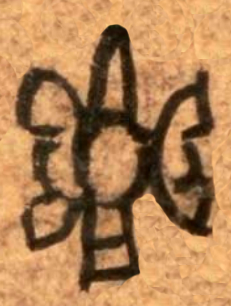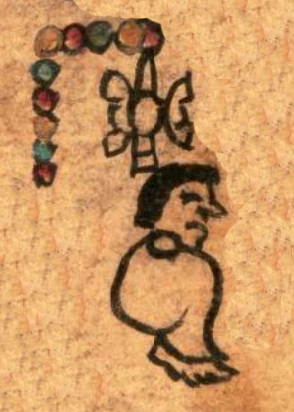olin (CQ)
This simplex glyph for movement (olin) is a black line drawing of something that looks like a butterfly, with a central axis, pointed at the top, blunt at the bottom, and a circle in the middle. On either side of the axis are what look like wings that curve outward, away from the central axis. The result is something like a quincunx and may point to the cardinal directions plus a center. This simplex has been separated from the notation for the number 10; combined, they represented a name glyph. Olin is a day sign, and the numerical coefficient refers to a specific date in the calendar. The name 10-Olin belongs to an elite male who appears in the Codex Quetzalecatzin, as shown in the historical contextualizing image below.
Stephanie Wood
Olin was a day name in the 260-day divinatory calendar called the tonalpohualli in Nahuatl. This calendar had a role in various Mesoamerican religions, including the Mixtec.
Stephanie Wood
covers ruling men and women of Tecamachalco through 1593
earthquakes, temblores, movement, movimiento

ol(in), movement, earthquake, https://nahuatl.wired-humanities.org/content/olin
el movimiento, un signo calendárico
Stephanie Wood
The Codex Quetzalecatzin, aka Mapa de Ecatepec-Huitziltepec, Codex Ehecatepec-Huitziltepec, or Charles Ratton Codex. Library of Congress. https://www.loc.gov/item/2017590521/
The Library of Congress, current custodian of this pictorial Mexican manuscript, hosts a digital version online. It is not copyright protected.



